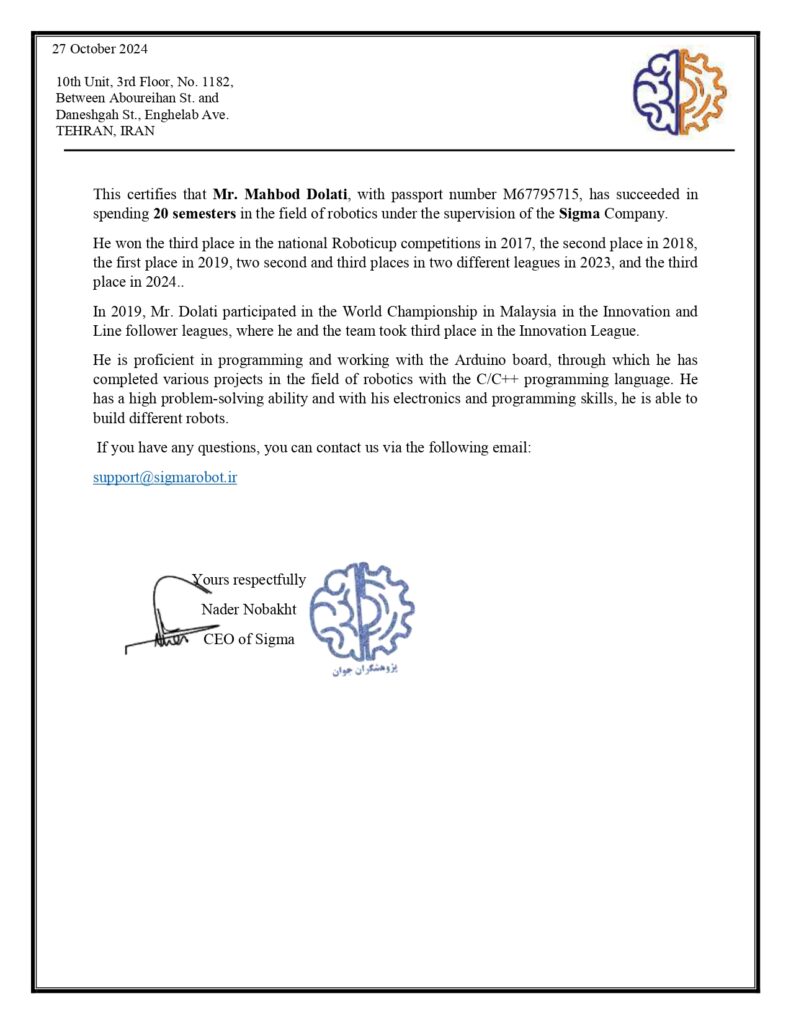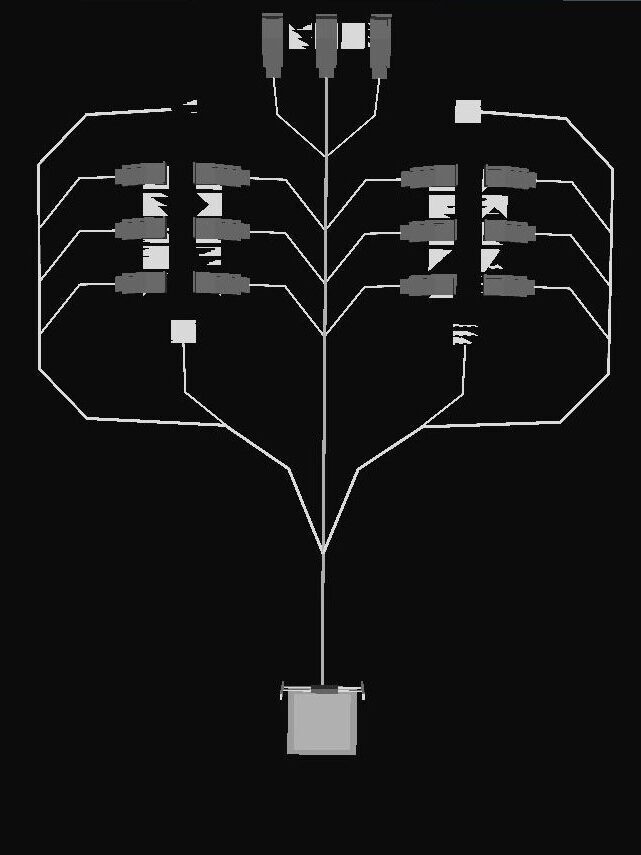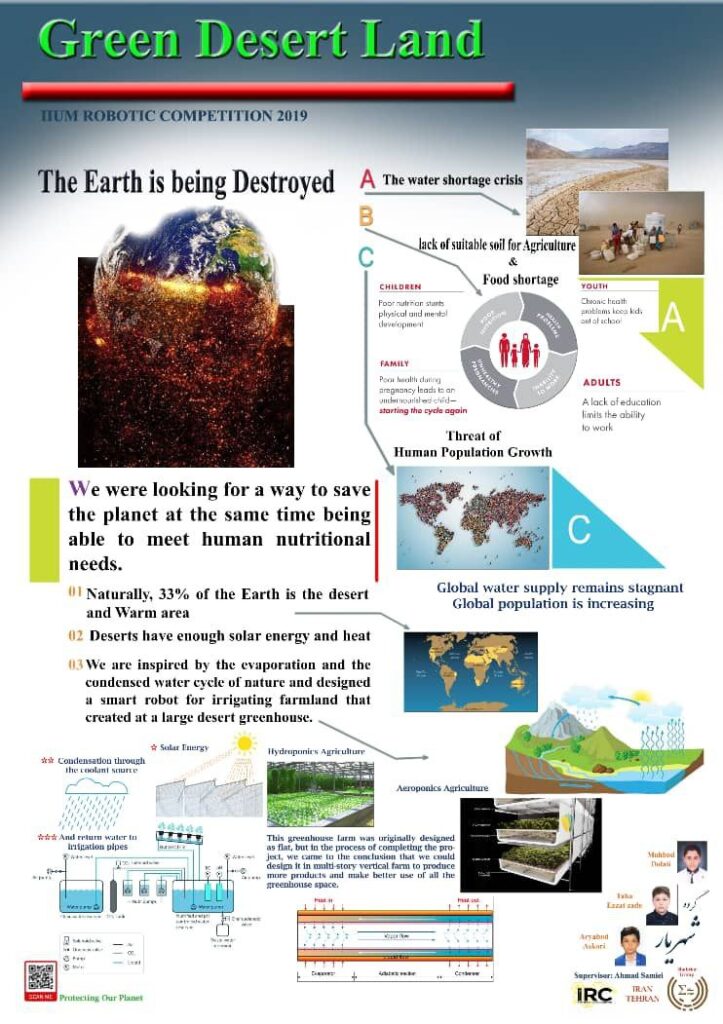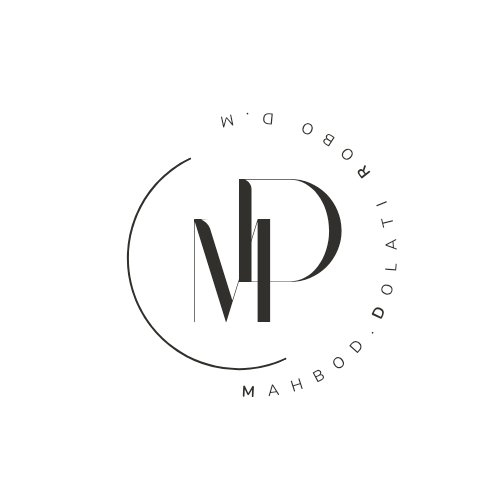Robotics
- Since the age of 9, I have been attending robotics classes, and over the course of 20 terms, I simultaneously acquired skills in designing, programming, and constructing warrior and pathfinder robots. In 2019, I won the championship as a member of a four-person team of the Iranian student robotics competition.
- Following this achievement, I was selected to compete in the Asian robotics competition in Malaysia. I successfully secured third place in Asia by leveraging a creative idea and working as part of a three-member group. This experience filled me with boundless happiness and fostered a positive outlook for my future endeavors …
“Sigma Robotic Institute Recommendation”



- Through dedication and hard work, significant success in robotics competitions was achieved. This success led to the opportunity to hold a part-time position as an idea generator and to be accepted as the youngest member of the Technical Committee for the country’s student robotics competitions (IRAN).
Ideas & Projects

SMART PARKING LOT
A parking lot which desighned specifically for the autodriving cars and ambulances.
The cars and ambulances can track and find their ways in this parking lot, using both accurate GPS tracker and following white line(s) which are drawn all the way in the lot. Enough spaces is considered for each car/ambulance alternately. The number for each car/ambulance must be visibly shown to the camera placed by the entrance, After the number of cars/ambulances are noted (by an RFID which uses AI to transfer strings from pictures), the adress for each section in the lot is shown/transferred to the vehicle as a numerical data (eg. ) and accurate cordinates. Then, the camera and LCD starts moving down, openning the way for the vehicle to enter and start following the line to find its way based on the granted address, whever it’s a straight way to the section or it’s circuitous.
TRANSFORMABLE WHEELS
The mechanically transformable wheels of an ambulance, which transform from a normal vehicle wheel into something similar to a propeller, enabling the ambulance to move forward or backward like a motorboat.
This innovation is designed to power the ambulance in flood-prone areas.

GREEN DESERT LAND
Our project, which secured third place in the Creative Idea competition at the IIUM robotic competition 2019 in Malaysia, involved a unique concept we developed, modeled, and presented as a team.
The idea focuses on planting vegetation in desert areas with specific conditions to minimize water wastage and reduce the impact of pollution (light pollution, sound pollution, air pollution, etc.). The key element of this project is condensation, which leverages the temperature variations in deserts from daytime to nighttime to conserve water.
FORKLIFTS COMPETITION
In this competition, two rival teams are provided with an equal number of storage units, numerical codes to unlock these storages, a forklift for each team, and various types of boxes (also known as loads, such as containers with electrical or chemical materials or damaged goods that must be properly stored). Scoring in this competition requires effective teamwork. Participants in each team have different responsibilities, including:
- Entering the correct codes or passcodes to unlock the necessary storage units based on the lifted load.
- Controlling the robotic forklift to lift and transport the loads.
- Guiding teammates on which box should be transported to which storage unit.
This competition is still in development and can either involve two rival teams or a single team racing against time.
CoSpace
The first simulating competition where I began learning, programming, and competing was CoSpace. I was initially introduced to CoSpace when I was about 14-15 years old.
I came up with a similar but more optimized idea due to CoSpace’s disadvantages, such as unfairness, lack of accuracy, and numerous bugs. My classmates and I competed several times (three times in national competitions and multiple times in online classes during COVID-19). Despite using the exact same codes for our simulated bots, the results were never consistent, which was one of the main reasons we decided to move on from this idea and look for more developed simulators (except for those who relied on luck and didn’t explore better alternatives).
We were introduced to CoSpace by working with simple tasks and gradually progressing, starting with coding a simple bot to move, speed up, and stop. Later, we coded for treasures and traps using color-sensitive sensors, obstacles based on ultrasonic sensors, and teleporters based on timers (RTC).
While CoSpace is undoubtedly a good way to begin understanding simulating robots, it is not sufficient for continued progress, especially if one remains limited to such simple simulations.
